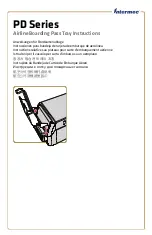
Configuring the MFP
94
Administrative support
Using the secure EWS
The SSL (Secure Sockets Layer) allows for secure connections to the Web server within the print device. To connect to the
EWS more securely, connect to the SSL port instead of the default HTTP port. The SSL port connection will encrypt all Web
server network communications between the PC and the MFP.
To connect to the SSL port:
1
Open a Web browser.
2
In the address line, enter the IP address of the MFP being configured using the format:
https: //ip_address/
.
Supporting SNMPv3 (Simple Network Management Protocol version 3)
SNMPv3 protocol allows for encrypted and authenticated network communications. It also lets the administrator select a
desired level of security. Prior to use, at least one user name and password must be established from the settings page. To
configure for SNMPv3 through the EWS of the MFP:
1
Open a Web browser. In the address line, enter the IP address of the MFP being configured using the format:
http://ip_address/
.
2
Click
Configuration
.
3
Under Other Settings, click
Network/Ports
.
4
Click
SNMP
.
SNMPv3 authentication and encryption has three levels of support:
•
No authentication and no encryption
•
Authentication with no encryption
•
Authentication and encryption
Note:
The selected level serves as a minimum level of protection. The MFP negotiates with the SNMPv3
requestor, and a higher level of protection may be agreed upon and used by both.
5
Indicate the setting for each sub-item as required for the network environment.
6
Click
Submit
.
Disabling SNMPv1 and SNMPv2
1
Open a Web browser. In the address line, enter the IP address of the MFP being configured using the format:
http://ip_address/
.
2
Click
Configuration
.
3
Under Other Settings, click
Network/Ports
.
4
Click
SNMP
.
5
Click to clear the Enabled check box unless SNMPv1 and SNMPv2 are used in this environment.
6
Click
Submit
.
















































